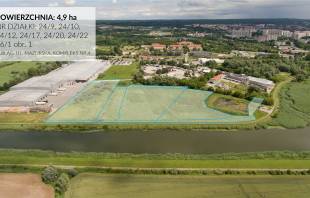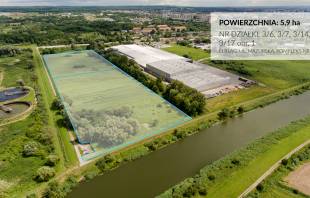The availability of workforce has become one of the key factors affecting tenants’ choice of locations for industrial and warehouse investments, - says Tomasz Olszewski, Regional Director, JLL. However, finding employees proves increasingly challenging. According to the Central Statistical Office, in April this year 7.7 percent of Poles were unemployed. Poland has not seen an unemployment rate this low for more than 20 years.
Low unemployment is not the only problem faced by many companies. Staff shortages can be also inferred from other data from the job market. As evidenced by a CBOS survey, as many as 66 percent of the unemployed have been jobless for more than a year, with 21 percent of them unemployed for two to five years, and one third staying without work for more than five years. At the same time, 48 percent of the unemployed are not willing to take up work. How are manufacturing and warehousing companies coping in this “employee’s market”? Tomasz Olszewski, Regional Director, JLL, who has been involved with the industrial and warehouse real estate industry for 23 years, tells us about how entrepreneurs approach this situation. In his professional career, he has advised Procter & Gamble, Unilever, Nestle, Antalis, Volkswagen, Gestamp, H&M, Coty, FM Logistic, Orsay, ACP Pharma and others.
Warehousefinder.pl: How much are companies affected by personnel shortages?
Tomasz Olszewski, JLL:The impact has been increasingly visible. Availability of workforce has become one of the key factors affecting companies’ choice of locations for industrial and warehouse investments. When deciding on the location for the construction or lease of a logistics centre, the paramount consideration used to be transportation costs. Companies used to organise their supply chains with regard to decreasing the distance between the supplier and the recipient by situating their warehouses or plants as close to their customers as possible. They mostly looked for savings in transportation costs. Today, this factor is naturally still taken into account, but in some industries it has become of secondary importance, as priority is increasingly given to the availability of workforce and employment costs.
This is usually less problematic to manufacturing companies, who are usually seeking specialist staff. Before they start working on the production line, they usually receive extensive training, which means increased salaries and greater willingness to work. Such positions are usually characterised by high loyalty.
On the other hand, in the warehouse industry, in companies such as Amazon, a large number of less specialised workers is usually employed for shorter periods. Thus, it is difficult to expect them to be loyal to their employers. This means that businesses need to have access to a larger pool of potential employees.
How do companies deal with staff shortages?
It seems that the easiest remedy would be to raise salaries. Unfortunately, the cost of this solution is often too high and it does not always work as expected. This is why many companies choose to provide non-pay incentives. Medical and recreational benefits, as well as free or subsidised meals, are becoming a standard. Many companies also offer flexible working hours, for example, 10 hours a day for 4 days a week.
It is also becoming commonplace for businesses to provide their employees with transportation to the workplace. At present, Amazon guarantees free transportation for its employees, even those whose commute involves a two-hour bus ride to a logistics centre.
Do most companies see such increases in commute time as a good way to acquire new employees?
It would seem so. Companies suffering from staff shortages will have to look for their employees in increasingly remote locations. However, I believe that two-hour bus rides, as in the case of Amazon, is already pushing the upper limit. And not just for the company, but also for the employee – especially considering that warehouse shifts are mostly 10 hours long. If we add a total of 4 hours of commuting, the time devoted to work can become too much.
Do staff shortages force companies to search for new locations?
There is no obvious answer to this question, as the situation might look differently depending on the company profile. It is different for production, logistics and commerce companies. The search for location is not such a great challenge for manufacturing companies, which do not have to take into account their proximity to the end customer.
At this time, JLL experts are executing a contract with a large investor involving leasing 100,000 sqm of space and employing about 2,000 people. During the negotiations and the search for a convenient location, the investor told us that they would prefer to move further to the east of Poland. While this increases transportation time and costs, the savings made in terms of salaries make choosing a new location in the east a much more attractive solution. If you multiply all the costs by the number of people employed, it is more cost-effective to move one’s goods over longer distances than to bring people from remote locations only to pay them more.
In our work, we increasingly see companies with large projects underway looking for locations offering greater availability of workforce, rather than lower transport costs.
Tomasz Olszewski, Regional Director, JLL









































